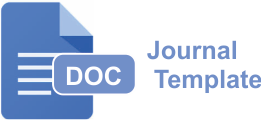Analysis of Student Perception of Accurate Online: Quantitative And Qualitative Approaches
Keywords:
accurate online, accounting information, student, perceptionAbstract
This study aims to analyze the perceptions of accounting students regarding the use of Accurate Online as a digital-based accounting learning tool. The research employed a mixed methods approach: a quantitative analysis using the Cartesian diagram to map students’ satisfaction and importance levels, and a qualitative phenomenological approach to explore students’ experiences with the free version of Accurate Online. The quantitative results indicate that the indicators Function Suitability, Performance Efficiency, Usability, and Reliability are positioned in quadrant B (high satisfaction and high importance), representing key strengths that should be maintained. Meanwhile, the Security indicator is located in quadrant C (low satisfaction and low importance), suggesting it is not a top priority. From the qualitative findings, students perceived Accurate Online as user-friendly, with a simple interface and supported by learning modules that enhance independent understanding. However, challenges remain in understanding advanced features (such as tax settings and account adjustments) and in dealing with technical issues related to reliance on a stable internet connection. Therefore, Accurate Online is considered effective as a digital accounting learning medium, though its optimal utilization requires adequate technological infrastructure and deeper comprehension of advanced features.
References
Abdul Nasir, Nurjana, Khaf Shah, Abdullah Sirodj, R., & Win Afgani, M. (2023). Pendekatan Fenomenologi Dalam Penelitian Kualitatif. Journal Of Social Science Research, 3(5), 4445–4451. https://j-innovative.org/index.php/Innovative
Anggraini, N. S., Kuntadi, C., & Pramukty, R. (2023). Pengaruh Teknologi Informasi, Pengendalian Internal dan Kompetensi Pengguna Terhadap Kualitas Sistem Informasi Akuntansi. Manajemen Kreatif Jurnal, 1(3), 28–39. https://doi.org/10.55606/makreju.v1i1.1599
Anwyl-Irvine, A., Dalmaijer, E. S., Hodges, N., & Evershed, J. K. (2021). Realistic precision and accuracy of online experiment platforms, web browsers, and devices. Behavior Research Methods, 53(4), 1407–1425. https://doi.org/10.3758/s13428-020-01501-5
Bestari, S. W., Zen, E. F., & Hotifah, Y. (2024). Implementasi Keterampilan Dasar Komunikasi Konselor Sebaya dalam Konseling Online. Buletin Konseling Inovatif, 2(1), 8–20. https://doi.org/10.17977/um059v2i12022p8-20
Collins, S. P., Storrow, A., Liu, D., Jenkins, C. A., Miller, K. F., Kampe, C., & Butler, J. (2021). Financig And Quality Of Housing Contruction: Introduction Of Information Systems As A Regulatory Tool. 167–186.
Creswell. (2017). qualitative, quantitative, and mixed methods approaches. In qualitative, quantitative, and mixed methods approaches. sage publications.
Darma, J., & Sagala, G. H. (2020). Pengaruh Kualitas Sistem Informasi Akuntansi Terhadap Kualitas Informasi Akuntansi (Studi Emptiris di Indonesia). Jurnal Ilmiah Manajemen, Ekonomi, & Akuntansi (JIMEA), 4(1), 227–237. https://doi.org/10.31955/mea.v4i1.231
Diskin, Z. (2023). Cartesian institutions with evidence: Data and system modelling with diagrammatic constraints and generalized sketches. Act 2023. http://dx.doi.org/10.1016/j.entcs.2008.
Fanshurna, T., Warda, I. L., Damayanti, R., & Aprilia, C. P. (2025). Jurnal Penelitian Nusantara Implementasi Sistem Akuntansi Accurate Untuk Meningkatkan Efisiensi Menulis : Jurnal Penelitian Nusantara. Jurnal Penelitian Nusantara, 1(2), 71–79.
Febriana, S., & Harahap, R. D. (2022). Analisis Penerapan Sistem Akuntansi Accurate Dalam Pencatatan Laporan Keuangan PT. Samudera Lautan Luas. Jurnal Ekonomi, Manajement, Bisnin Dan Akuntansi, 2(2), 471–474. https://doi.org/10.53697/emba.v2i2
Fitriani, F. S., Harahap, R. D., & Nurlaila, N. (2023). Perkembangan UMKM Di Indonesia : Peran Pemahaman Akuntansi, Teknologi Informasi dan Sistem Informasi Akuntansi. Owner, 7(3), 2518–2527. https://doi.org/10.33395/owner.v7i3.1427
Franco Benony Limba, S. G. S. (2020). Sistem Informasi Akuntansi. July, 1–23.
Hastuty HS, W., Agus, Salsabila, M., & Harahap, N. (2023). Penerapan Sistem Informasi Akuntansi. Jurnal EMT KITA, 7(2), 317–324. https://doi.org/10.35870/emt.v7i2.891
I Putu Adi Permana Putra. (2025). Perempuan dan Ketenagakerjaan: Fenomenologi Pengalaman Hidup Penenun Endek di Bali. Indonesian Gender and Society Journal, 5(2), 76–83. https://doi.org/10.23887/igsj.v5i2.89779
Meilani, L., Suroso, A. I., & Yuliati, L. N. (2020). Evaluasi Keberhasilan Sistem Informasi Akademik dengan Pendekatan Model DeLone dan McLean. Jurnal Sistem Informasi Bisnis, 10(2), 137–144. https://doi.org/10.21456/vol10iss2pp137-144
Puteri, L. R., Karim, N. K., & Nurabiah, N. (2024). the Effect of Computer Anxiety on the Ability of Accounting Students To Use Accounting Software At University of Mataram. Jurnal Akuntansi Universitas Jember, 22(1), 49. https://doi.org/10.19184/jauj.v22i1.41382
Roshani, lailatul, urai ari, N. (2021). Analisis Kepuasan Mahasiswa Terhadap Pelayanan Pendaftaran Mahasiswa Baru Di Universitas Muhammadiyah Pontianak Sebi, 3, 111–115.
Roshani. (2024). Pengaruh Penerapan SIMAKDA, SPI, dan Kompetensi SDM terhadap Kualitas Laporan Keuangan Daerah. Indonesian Accounting Literacy Journal, 4(2), 29–41. https://doi.org/10.35313/ialj.v4i2.5713
Rusgowanto, F. H. (2023). Pelatihan Pembukuan Akuntansi Berbasis Aplikasi. 4(6), 11591–11597.
Saputra, F. A., Saputra, O. A., Asyraf, A., & Kusumastuti, R. (2023). Perkembangan Akuntansi Keuangan Serta Tantangan di Era Digital (Sebuah Kajian Literatur). 1, 124–132.
Setiawan Septian, Elang Derdian Marindani, B. W. S. (2024). Perancangan dan Implementasi Robot Tiga Roda Omnidirectional Berbasis Koordinat Kartesian Menggunakan Metode Odometri dan Potential Field.
Ummah, M. S. (2019). Akuntansi Di Era Digital: Pendekatan TAM (Technology Acceptance Model) Pada Software Berbasis Akuntansi. Sustainability (Switzerland), 11(1), 1–14. http://scioteca.caf.com/bitstream/handle/123456789/1091/RED2017-Eng-8ene.pdf?sequence=12&isAllowed=y%0Ahttp://dx.doi.org/10.1016/j.regsciurbeco.2008.06.005%0Ahttps://www.researchgate.net/publication/305320484_SISTEM_PEMBETUNGAN_TERPUSAT_STRATEGI_MELESTARI
Wahyudi, S. R., Purwantini, A. H., & Farida, F. (2024). the Adoption of Cloud Accounting By Msmes: the Role of Digital Vision and Its Impact on Economic Sustainability. Jurnal Akuntansi Universitas Jember, 22(2), 201. https://doi.org/10.19184/jauj.v22i2.52988
Yohana, M. jeni lumban gaol. (2021). Sistem Informasi Akuntansi. Konsep-Konsep Dasar Sistem Informasi Akuntansi, 3. https://pustaka.ut.ac.id/lib/wp-content/uploads/pdfmk/EKSI431203-M1.pdf
Yusanto, Y. (2020). Ragam Pendekatan Penelitian Kualitatif. Journal of Scientific Communication (JSC)1(1). https://doi.org/http://dx.doi.org/10.31506/jsc.v1i1.7764
Zamzami, F., Nusa, N. D., & Faiz, I. A. (2021). Sistem Infromasi Akuntani (p. 260). https://books.google.co.id/books?hl=id&lr=&id=tTMXEAAAQBAJ&oi=fnd&pg=PA1&dq=sistem+informasi+akuntansi&ots=_AbreF3jlc&sig=pr6FcP9x3VBdpKIzXXjKk8WiGSM&redir_esc=y#v=onepage&q=sistem informasi akuntansi&f=false
Downloads
Published
How to Cite
Issue
Section
License
Copyright (c) 2025 Roshani roshani, Eliza Noviriani, Lailatul Mukaromah

This work is licensed under a Creative Commons Attribution 4.0 International License.



